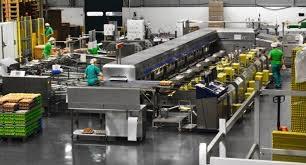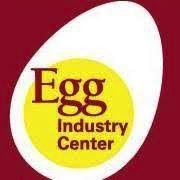 On August 25th the Egg Industry Center released the 2020 version of the National Egg Processing, Cartoning and Transportation Cost Survey. Compiled by Maro Ibarburu and Lesa Vold of the Egg Industry Center and Alejandro Plastina and Richard Gates of the Department of Economics, Iowa State University, the data as presented, updated the previous report reflecting 2018.
On August 25th the Egg Industry Center released the 2020 version of the National Egg Processing, Cartoning and Transportation Cost Survey. Compiled by Maro Ibarburu and Lesa Vold of the Egg Industry Center and Alejandro Plastina and Richard Gates of the Department of Economics, Iowa State University, the data as presented, updated the previous report reflecting 2018.
The response to the industry questionnaire was disappointing. Only 16 out of 100 surveys were returned. Notwithstanding the low compliance, the data reflected 80 million laying hens corresponding to approximately 35 percent of the presumed 224 million hens producing shell eggs. The data suggested that 74 percent of eggs processed by those responding to the survey were packed in line, 24 percent were acquired as nest-run and consequently were graded off-line and two percent were graded loose.
In comparing costs between the 2018 and 2020 surveys, median values expressed in cents per dozen were: -
|
COST INPUT
|
2020 |
2018 |
| ___________________________________________________________________ |
| The 12-pack carton cost |
9.95 |
9.80 |
| Case cost (30 dozen) |
3.60 |
4.00 |
| Transportation cost to warehouse |
5.56 |
5.50 |
| Processing, in-line 1 |
2.90 |
13.27 |
| Processing, off-line |
5.47 |
16.47 |
| Grade yield loss in-line* |
5.52 |
7.04 |
| Grade yield loss off-line* |
6.97 |
10.00 |
*The report noted that the differences in grade yield loss were attributed to an alternative method of calculating data for 2020.
The estimated median cost of packaging, processing and transport for in-line eggs was 38.66 cents per dozen and for off-line eggs, 42.67 cents per dozen.
It is hoped that if the EIC conducts a 2022 survey the following aspects will be considered:-
- Differences between alternative cartons including fiber, PET, 30-egg-tray and sleeve and other types in popular use.
- Regional differences in cost with reference to labor rates
- Packaging of cage-free product compared to eggs from caged flocks with specific reference to downgrades classified according to surface deposits and cracks
- Comparison of labor complements and costs in plants using robotic packers
- Comparison of packing generic compared to specialty eggs
- Differences attributed to operational rate of packers, single shift, extended shift or double shift plant operation.
- Differences attributed to plant throughput
 The Egg Industry Center and their collaborators in the Department of Economics at Iowa State University are commended on their analysis given the restraint of the limited response. The relevance of the data is obviously subject to selection bias given the number of surveys returned by producers. The compliance rate for the survey in 2020 was 30 percent lower than in 2018. The more data that the EIC receives the greater will be the relevance and applicability of information derived from the analysis of data.
The Egg Industry Center and their collaborators in the Department of Economics at Iowa State University are commended on their analysis given the restraint of the limited response. The relevance of the data is obviously subject to selection bias given the number of surveys returned by producers. The compliance rate for the survey in 2020 was 30 percent lower than in 2018. The more data that the EIC receives the greater will be the relevance and applicability of information derived from the analysis of data.
The EIC might be advised to consider specific aspects of packaging, processing and transport as an ongoing exercise rather than attempting to conduct a comprehensive survey of globular costs at two year intervals. Frankly an integrated egg producer would not be able to derive any direct operational or financial benefit from the 2020 survey unless they diverged significantly from any of the median cost categories, representing an unlikely situation.
The EIC should by now recognize the reluctance of producers to provide information to universities, government agencies and non-corporate entities. This is a function of the perception of minimal benefit from compliance compared to the obvious risks and consequences associated with disclosure of data. The Industry is all too aware that animal rights groups or customer associations may invoke the Freedom of Information Act to acquire data. The challenge for the EIC is to incentivize producers to comply by providing useful data. This would be analogous to the approach used by a commercial benchmarking enterprise that has actually failed to gain traction in the egg industry for reasons that are self-evident. Specific studies could be conducted personally on an in-plant basis subject to permission and cooperation to acquire and evaluate data. This would require more than a mailed out survey form with an office-centric approach and presumes familiarity with packing plants and their operation.